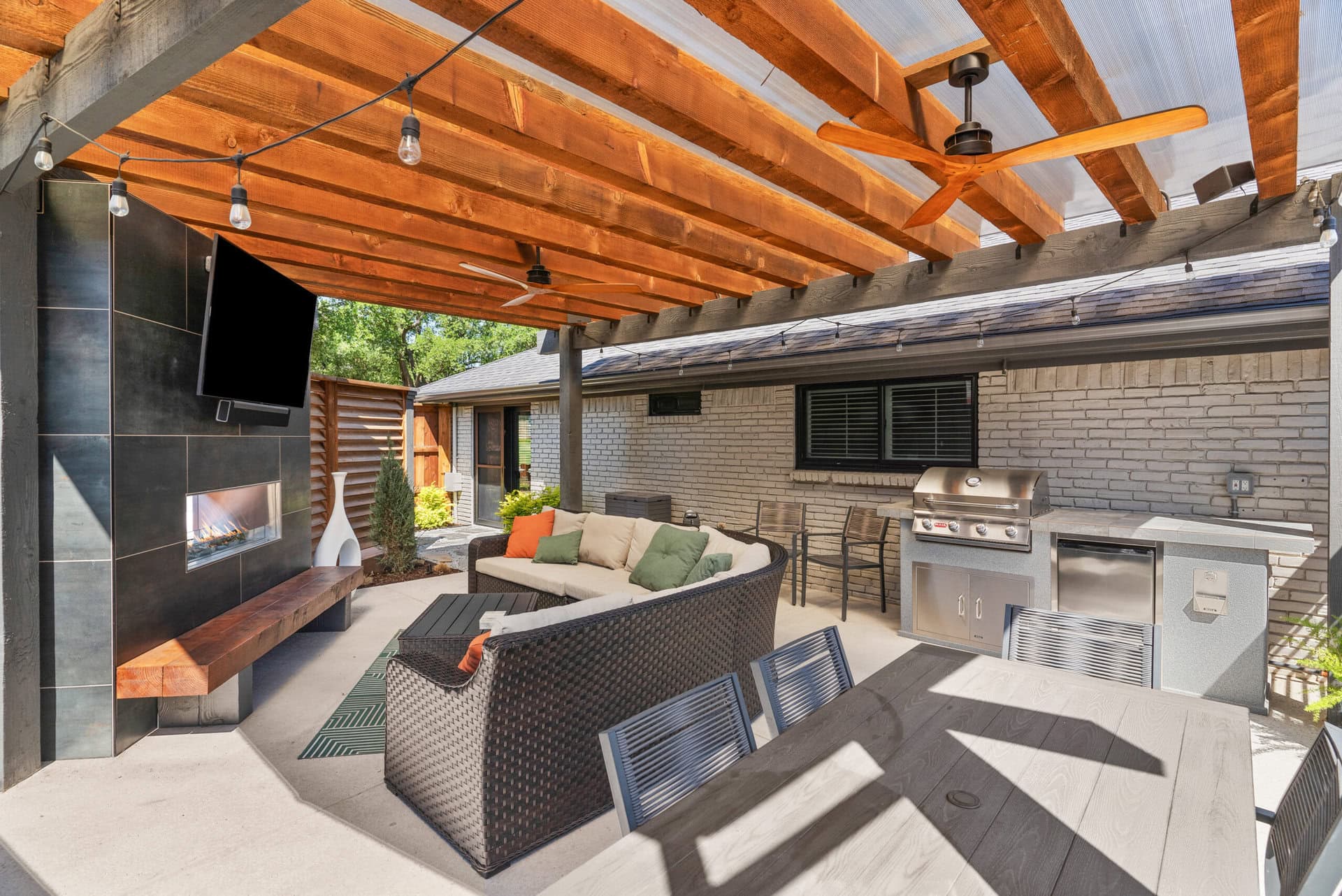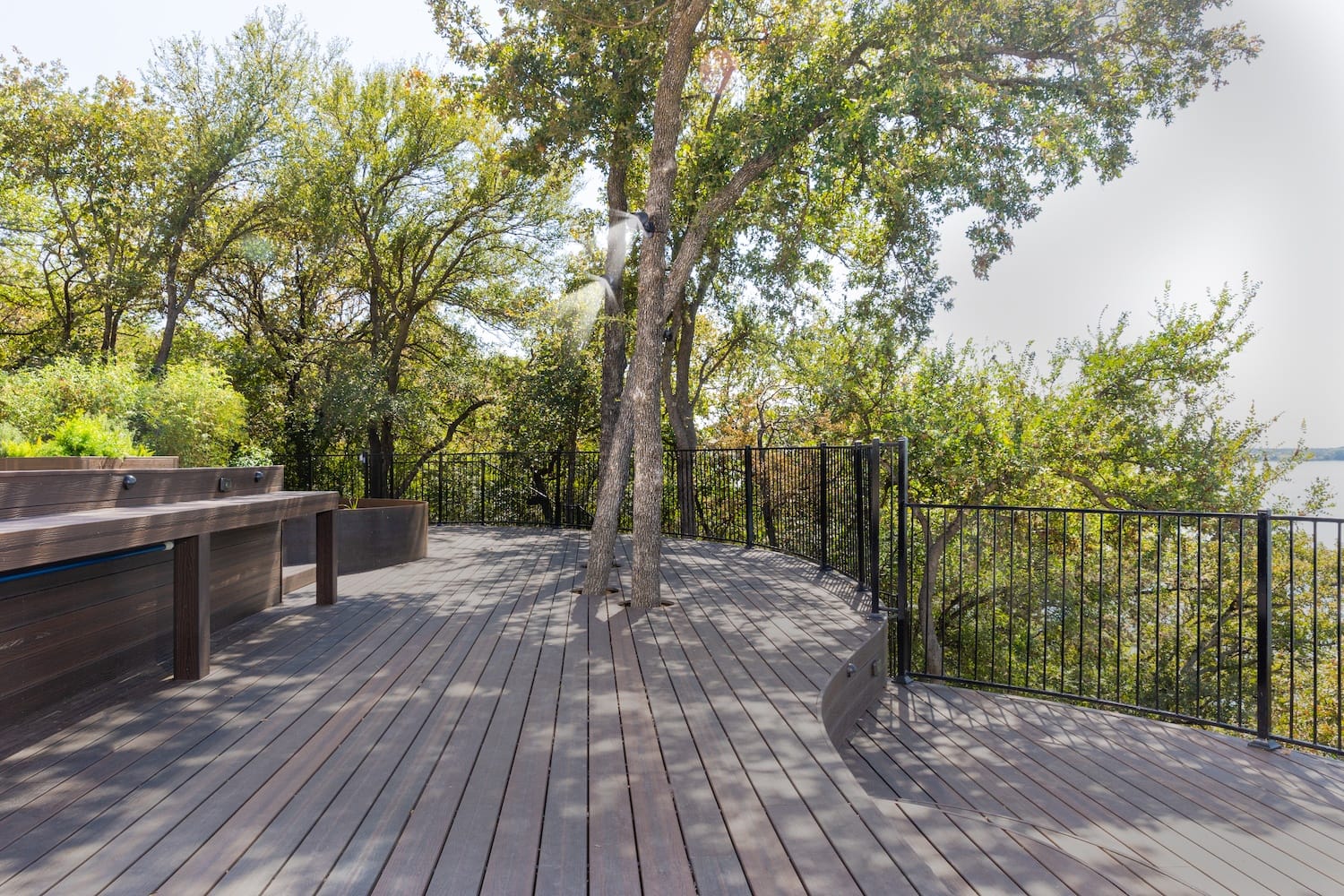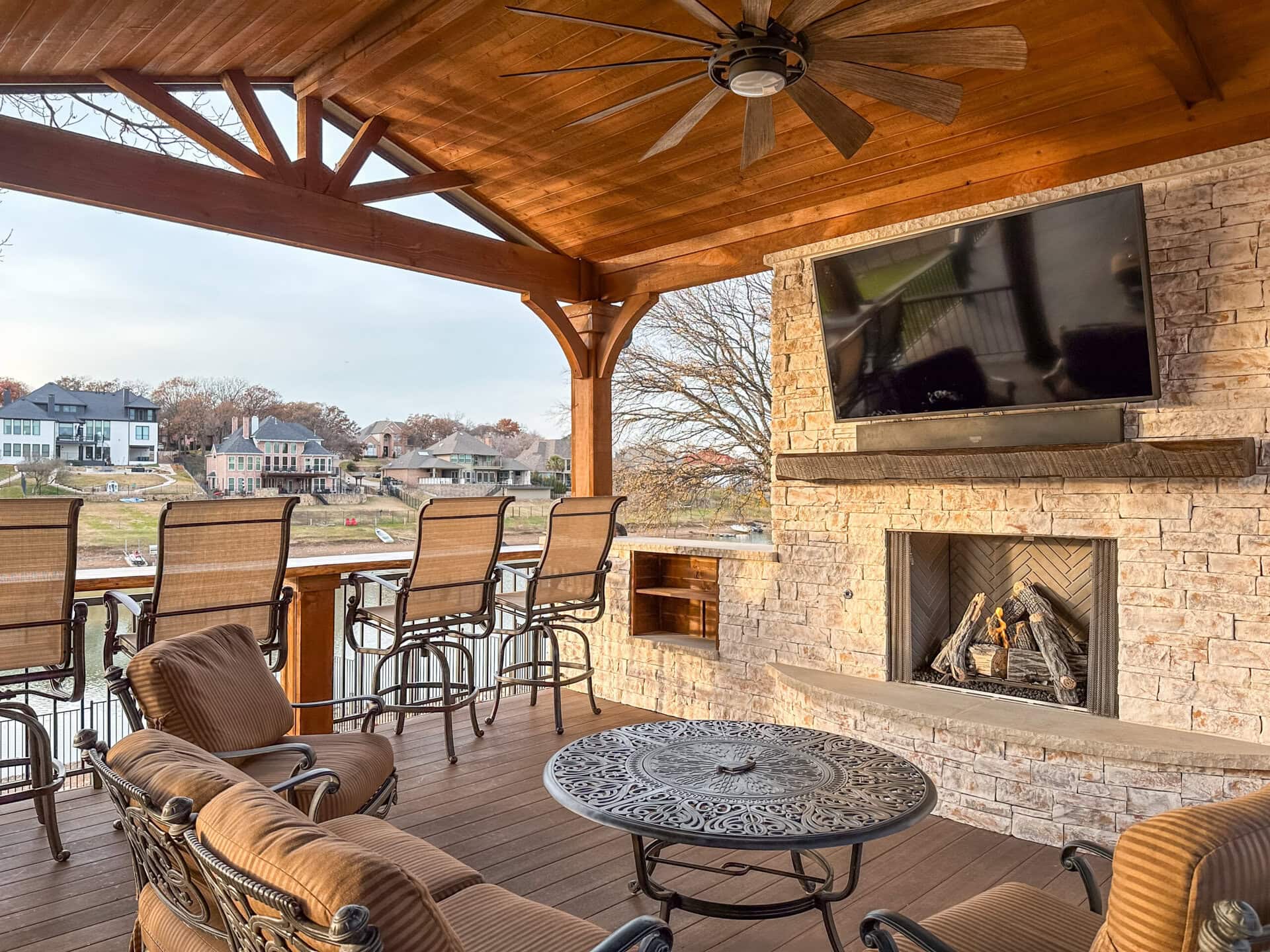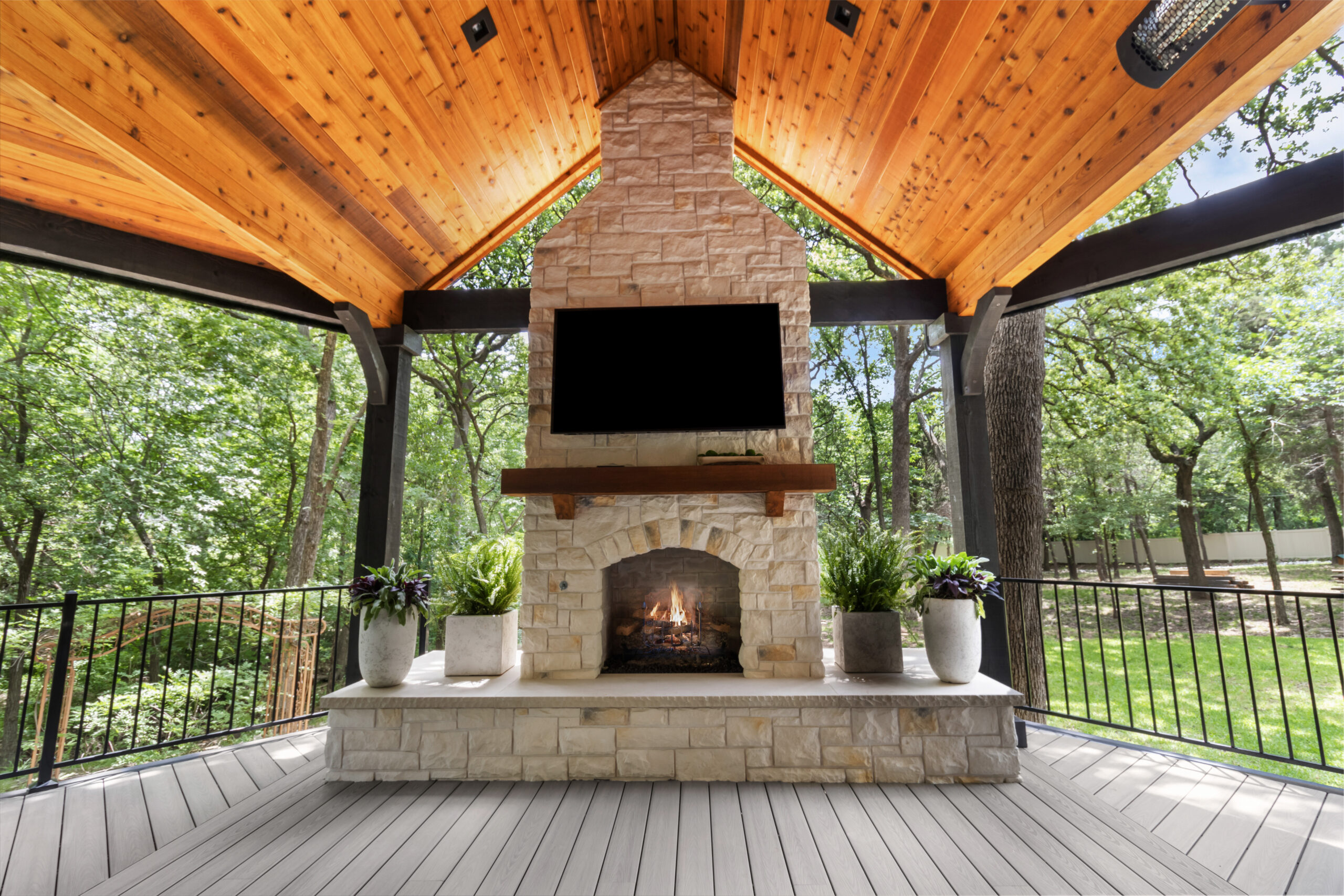When Is the Best Time to Stain a Fence?
Your backyard fence is more than just a border. It is a key part of your outdoor living space. Whether you are refreshing an aging fence or protecting a new one, knowing the best time to stain your fences helps ensure the stain lasts and looks great for years.
In this guide, we will cover the best weather conditions, seasonal timing, and expert tips for staining a fence. You will also find region-specific advice for Texas homeowners and anyone deciding between DIY and hiring a professional.
Table of Contents
When Is the Best Time to Stain a Fence?
There is no single rule about when you should or should not stain your fence. With a high-quality stain, you can tackle this project any time of year. But choosing the right time can make a big difference in how well the stain works and how long it lasts.
Temperature, humidity, and sun exposure all affect how well the stain penetrates and cures. Mild weather with low humidity and no rain in the forecast gives you the best results. Avoid extreme heat, cold, or direct sunlight that can cause the stain to dry too fast on the surface instead of soaking in.
Stain At the Start of the Year
One of the best times to stain your fence in Texas is between January and March. While it might be a little colder than a summer project, there are a few reasons. Staining your fence around this time means your backyard will have a refresh for the coming summer months, and you’ll feel more confident inviting your family and friends around.
Since children and pets are less likely to be outside in colder weather, you can avoid accidental handprints or paw marks on freshly stained wood.
Cooler weather also helps prevent flash drying. When stain dries too quickly in direct sun, it does not absorb fully into the wood. This can lead to peeling, flaking, or early fading. Cloudy days are ideal for staining, so early spring or late winter in Texas often provides the right conditions.
Always check the weather forecast before starting. You will need a few dry days before and after application. The wood should be completely dry before staining, and the stain needs time to cure after it is applied.
If winter is too busy for you, late summer or early fall can also work, as long as the weather cooperates.
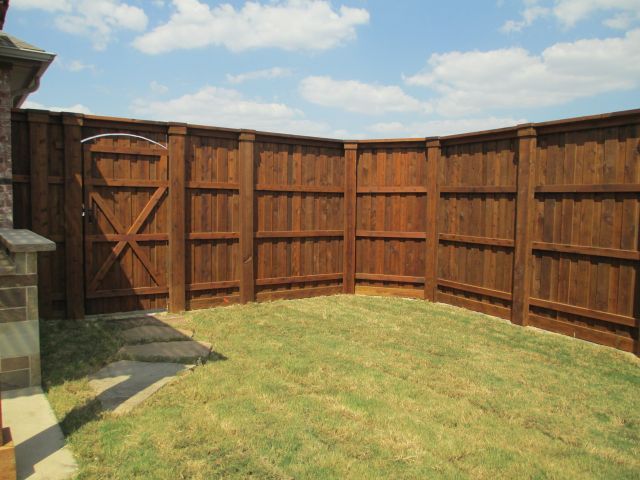
When Is the Best Time to Stain a Cedar Fence
Cedar is a popular choice for fences thanks to its natural beauty, durability, and resistance to rot. Even though cedar holds up well over time, it still benefits from proper care. Staining cedar helps protect the wood from moisture, sun damage, and aging.
Like with other wood types, the best time to stain a cedar fence is in cooler, milder months. Aim for the same January through March timeframe if you are in Texas, or early fall if spring has passed. Proper timing helps the stain soak into the cedar fibers and protects its rich color.
Tips for Proper Surface Preparation and Drying Time
The success of your fence staining project depends heavily on how well you prepare the wood before applying the stain. Start by thoroughly cleaning the fence to remove dirt, mildew, and any leftover stain or sealant.
You can use a wood cleaner or a low-pressure power wash, but be sure to let the fence dry completely before moving on. If the surface is rough or weathered, light sanding helps smooth out imperfections and allows the stain to absorb more evenly.
Once the surface is clean and dry, check the weather forecast and choose a stretch of at least two to three dry days with temperatures between 50 and 85 degrees. Avoid staining during high humidity or direct sunlight, which can cause the stain to dry too quickly on the surface without fully soaking in.
After application, allow the stain to cure for at least 24 to 48 hours, depending on the product instructions and local weather. Taking the time to properly prepare and plan will ensure your fence looks great and stays protected for years to come.
Signs It’s Time to Re-Stain Your Fence
Not sure if your fence needs a new coat of stain? Watch for these common signs:
- The color is faded or dull
- Water no longer beads on the surface but soaks in
- The wood feels dry, rough, or splintered
- You notice flaking, peeling, or cracking stain
- The fence shows signs of mildew, rot, or warping
Most fences need to be re-stained every two to five years, depending on your climate, the type of stain used, and how much sun or moisture the fence is exposed to. In Texas, where UV exposure is high, a more frequent maintenance schedule may be needed.
How Much Does It Cost to Stain a Fence
If you are staining the fence yourself, the total cost will depend on the size of the project, the type of stain you choose, and the tools you need. A 4 to 5-liter bucket of stain typically covers about five standard fence panels with one coat. Prices vary by brand and quality, but spending a little more on a high-performance stain is worth it in the long run.
In addition to the stain, you will need supplies like brushes, rollers, sprayers, tarps, and cleaning products. If the wood is rough or weathered, you may also need sandpaper or a power sander to prep the surface properly.
When selecting a stain, think about how it will perform in your region and the time of year:
- Oil-based stains soak deeper into the wood and tend to last longer, especially in hot, sunny climates like Texas. They take more time to dry but offer long-term protection.
- Water-based stains dry faster and are easier to clean up. They work well in cooler or low-humidity conditions, though they may require more frequent reapplication.
If your fence needs extra prep or repairs, that can add to the overall cost. And if you prefer to leave the work to the professionals, a fence staining service will handle everything for you, from prep to cleanup and ensure an even, durable finish that holds up over time.
Stained Fences: What Are the Benefits?
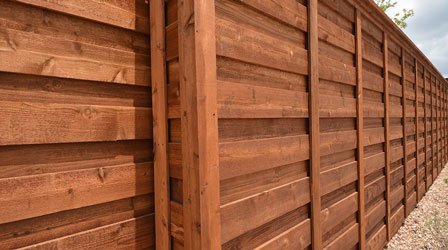
There are several practical and visual benefits to staining your fence. Many people think stained outdoor living structures and fences are just for an aesthetic benefit – but there’s actually a lot more going on beneath the surface.
Here are the main reasons you should stain any wood that’s going to live outside.
A Longer Life
Staining your fence adds years to its life. Even though wood is designed for outdoor use, it is still vulnerable to moisture and UV damage. Stain creates a protective seal that keeps out rain, dew, and humidity, helping to prevent rot and warping.
Staining also protects against freeze damage. If water gets inside the wood and freezes, it can expand and cause the boards to crack. This not only affects appearance but also weakens the structure of your fence.
In hot, sunny areas like Texas, UV rays are another major concern. Sunlight can bleach wood over time, fading its color and wearing down its grain. Staining helps block UV exposure and maintain the fence’s rich tone.
Protects Your Investment
A fence is not just a design feature. It is a long-term investment in your property’s value, privacy, and security. Whether you installed the fence recently or inherited it with your home, staining helps make sure that investment pays off.
Staining creates a protective barrier that helps extend the life of your fence. That means fewer boards to replace, less structural damage to repair, and more years of use without major maintenance. It also signals to future buyers that you have cared for your property, which can positively impact your home’s resale value.
Aesthetically More Attractive
A stained fence gives your backyard a clean, finished look. The stain highlights the natural wood grain while adding depth and uniform color. It also helps hide minor imperfections such as uneven tones, weathering, or surface flaws.
You can choose a natural, clear stain to preserve the wood’s original tone or a rich, darker color to contrast with your lawn and landscaping, stain adds cohesion to your outdoor space. It pairs beautifully with patios, outdoor kitchens, firepits, and garden beds.
If you host guests often or simply enjoy spending time outside, a freshly stained fence can elevate the atmosphere and help you enjoy your space more
Elevate All Aspects of Your Backyard
If you have been wondering when to stain your fence, now you have your answer. The right stain at the right time can completely refresh your outdoor space. Whether you are updating your yard before summer or preparing for cooler months, a properly stained fence improves both form and function.
Looking for professional help to make your outdoor space shine? Our team at Texas Best Fence and Patio is here to help.
Request your free estimate today and let’s get started.
Recent Posts
Top 5 Outdoor Living Space Ideas for 2026 in North Texas
Composite Deck Care: Your Texas Winter Maintenance Guide
How to Get Your Outdoor Living Space Holiday-Ready in Dallas, TX
Fireplaces vs. Fire Pits: The Ultimate Guide to Outdoor Fire Features
Categories
Request an Estimate Today
and their uses, you can create a concept that works for your
family. Keep in mind the purpose of the structure, whether natural
light in your home is a factor, and where you want the focal point
of your backyard to be. Once your gears get turning, reach out to
request an estimate on your concept.


